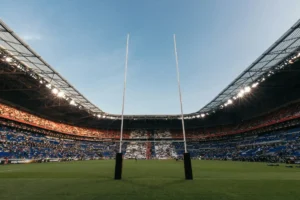Written by Rob Brewis, Fund Manager of the Aubrey Global Emerging Markets fund.
The Indian motorcycle market is among the largest in the world and this sector is of particular interest to the Aubrey Global Emerging Market Strategy because we are at the beginning of an entire product replacement cycle. As a still relatively poor country, the affordable “2-wheeler” has become a vital cog in the transport network, for goods, people, animals and often entire families. The “3-wheeler” is another segment loved by Indians, and in many other emerging markets, which has been largely sidestepped in the developed world. While the “4-wheeler” remains an aspirational luxury for most in India outside the urban middle class.
Given that India has recorded among the highest economic growth rates in the world in recent years, it may come as a surprise that the Indian motorcycle market shrank considerably from 20.2mn annual sales in the fiscal year of 2017-18, to a low of 13.5mn in 2021-22, before starting to rebound more recently.
The Indian government decided to skip an emissions standard stage in 2019 and from 1st April 2020, Indian motorcycles had to meet Bharat Stage VI, a huge jump from Bharat Stage IV, bringing India up to date with best European practice. This resulted in a significant re-engineering of all motorcycle engines and an inevitable jump in costs, much of which was passed onto the consumer. In addition, compulsory insurance was introduced and increasingly enforced around the same time which added to the cost of ownership of motorcycles. The combination slashed affordability, severely curtailing sales.
The jump in costs was eventually overhauled by rising incomes and affordability being restored. Of course, as the fleet of motorcycles had aged, there was huge pent up replacement demand which is now accelerating the recovery and will run for many years.
Another positive has been the arrival of electrification. The Indian government has sensibly focussed their limited resources on subsidising 2-wheeler electric vehicles (EVs), a form which covers a much larger portion of the population and should lead to scale benefits faster than 4-wheelers. The result has been an explosion of new entrants, as well as incumbents introducing electric 2-wheelers, and a myriad of charging and battery swapping business models. Incumbent, TVS Motors, has a wide variety of options and has done an excellent job of adapting their market leading scooters to electric versions.
At the upper end of the spectrum are the premium, larger capacity motorcycles which are attracting interest from the leading global brands, despite being a niche market. Inevitably as Indians get richer, this segment will see huge growth in demand. For the foreign brands, there is one rather substantial obstacle and that is the incumbent leader, Royal Enfield, with the world’s oldest continuously produced model, the Bullet, launched in 1932, still leading the charge. Royal Enfield is now owned and produced by local Indian company, Eicher Motors.
Royal Enfield has weathered the regulatory changes and ensuing downturn well, and has emerged with a superior product range, which both maintains its brand heritage, while also performing better and meeting the modern regulatory standards. Harley and Triumph tried and failed a few years ago but have both now returned recently with new local partners and more affordable products. These will no doubt sell well to enthusiasts, but they do not seem a threat to Royal Enfield’s leadership. Royal Enfield’s more affordable Hunter is also keeping the mainstream brands at bay.
TVS has followed into the premium market with the purchase of Norton Motorcycles in 2020. There are few, if any, motorcycle brands with such heritage. From the Energette in 1902, which was little more than a bicycle with a motor, to utter dominance of motorcycle racing in the UK for large parts of the last century, Norton is being revived and reinvented by its new owners. Norton lacks the same popularity as Royal Enfield in India, but as a global luxury brand, its revival is timely and, by association, does no harm to TVS.
While these beautiful and historic brands are exciting to see, what is more interesting for investors is that these leading Indian motorcycle companies such as Eicher and TVS are once again participating in the Indian growth story, and for the next few years at least, it is a turbo charged, replacement driven growth story as well.





![[uns] house of commons, parliament](https://ifamagazine.com/wp-content/uploads/wordpress-popular-posts/788182-featured-300x200.webp)









